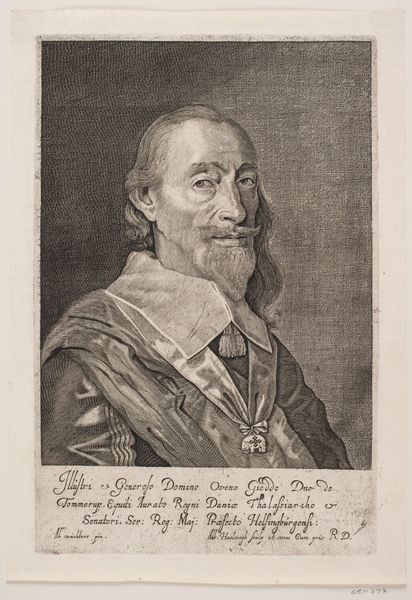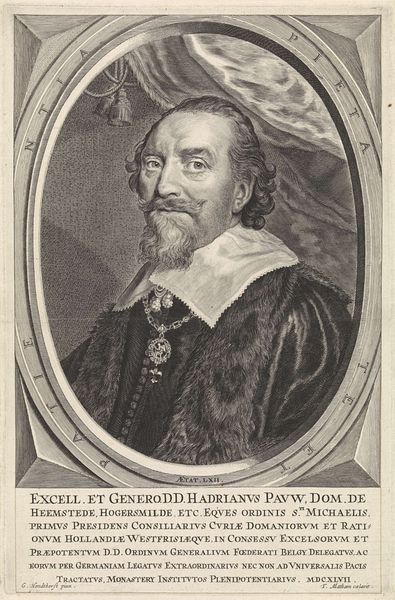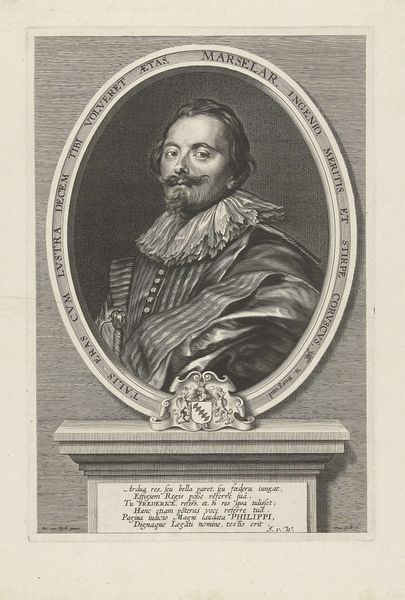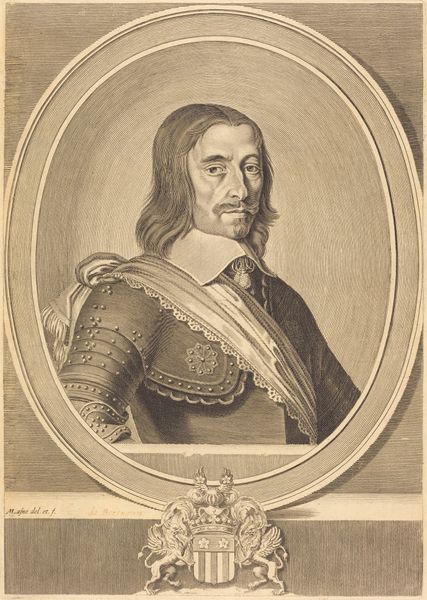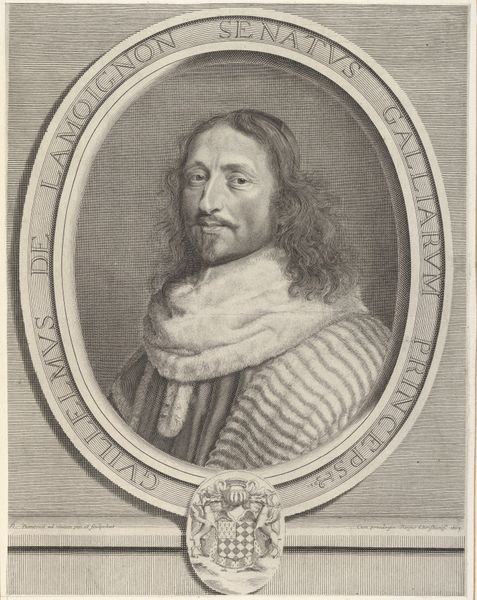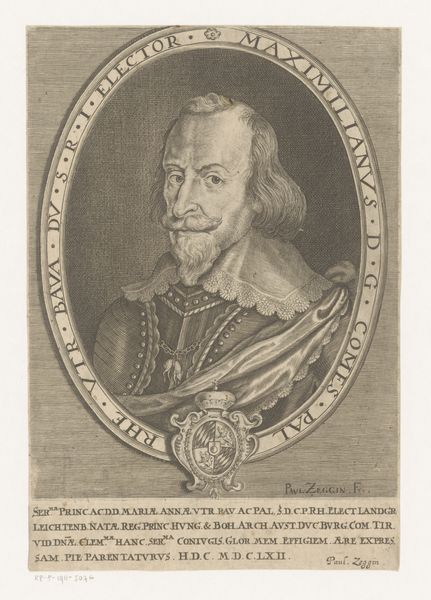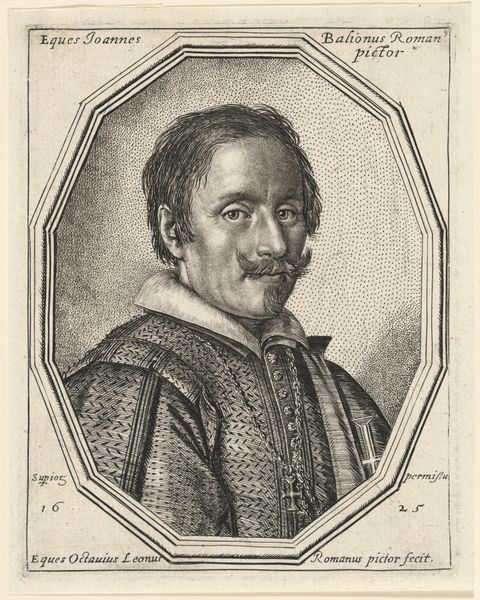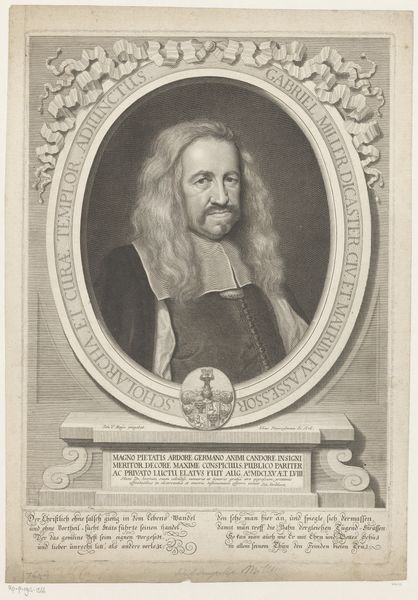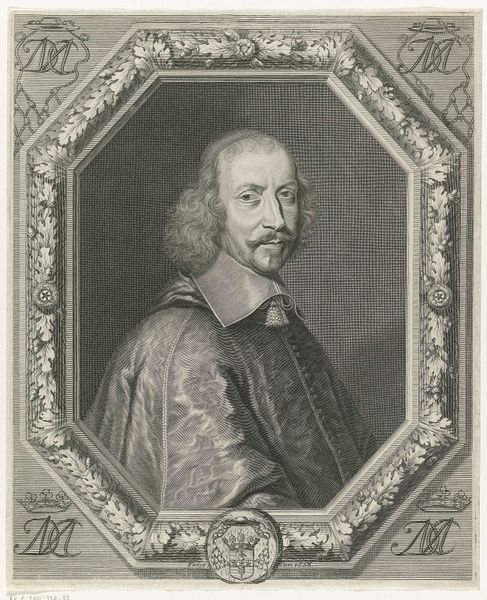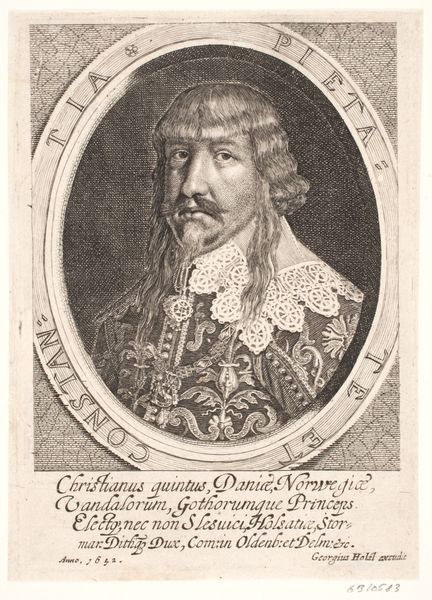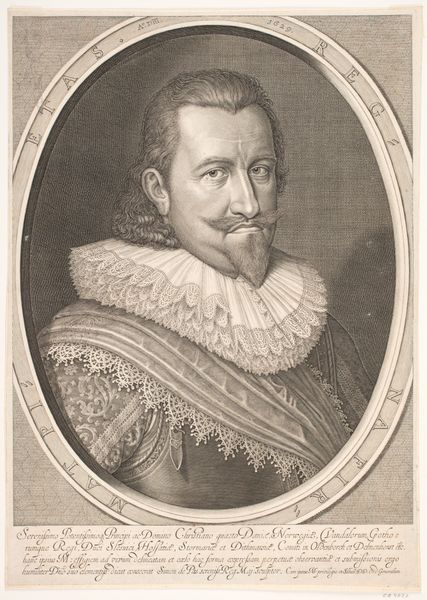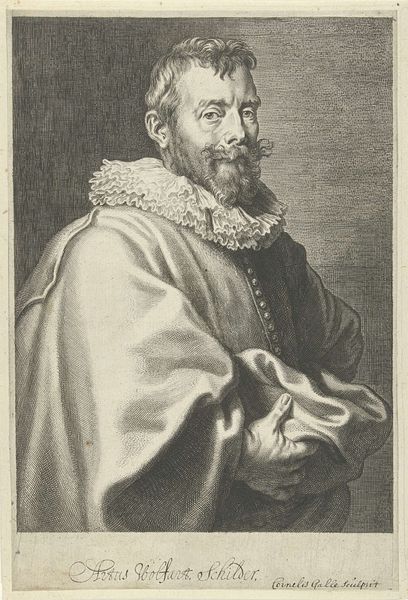
pencil drawn
facial expression drawing
light pencil work
pencil sketch
charcoal drawing
charcoal art
portrait reference
pencil drawing
portrait drawing
pencil work
Dimensions: 312 mm (height) x 207 mm (width) (plademaal)
Curator: Here we have Albert Haelwegh’s portrait of Ove Gedde, created between 1655 and 1659. This print, held at the SMK, offers a fascinating glimpse into 17th-century Danish aristocracy. Editor: He looks intense, doesn't he? All those fine lines etched around his eyes – a life lived, no doubt. Sort of makes you wonder what secrets are tucked behind that carefully trimmed beard. Curator: Indeed. Gedde, a prominent admiral and statesman, was deeply enmeshed in the political and maritime affairs of his time. Consider the cultural emphasis on male authority and governance that portraits like these reinforce. How do such representations solidify societal power structures? Editor: Well, there's the stiff formality of the pose, and the very, very serious look. Plus, the inscription – a bunch of titles! It's like they are laying it on thick, ensuring you get just how important this guy was. Almost feels like a shield, right? Protecting him. Or maybe even us from the unsettling reality of power. Curator: Precisely. This portrayal conforms to expectations surrounding leadership. And note Haelwegh's skillful use of line to convey texture, from the rich fabrics to Gedde's distinctive facial features. These details play an essential part in communicating status and authority. Editor: It is rather well done, I have to admit. All the little details and flourishes make the piece more... believable. It almost makes him appear touchable...or relatable. But I keep thinking, what was he REALLY like? Bet he wasn't posing all serious behind closed doors. Did he ever just have a good laugh? Curator: The intention, in this context, likely had more to do with preserving his image for posterity, to serve as an example. Examining the impact of these images across history encourages dialogue about historical gender roles and social identities. Editor: In the end, though, even with all the formal trappings, I still find myself drawn to those eyes, wondering what kind of stories they hold... You know, it’s those human elements, regardless of the subject's societal status, that genuinely hook you into a piece, I think. Curator: I agree, even with its limitations, this print still gives a starting point for questioning notions of identity and representation.
Comments
No comments
Be the first to comment and join the conversation on the ultimate creative platform.

